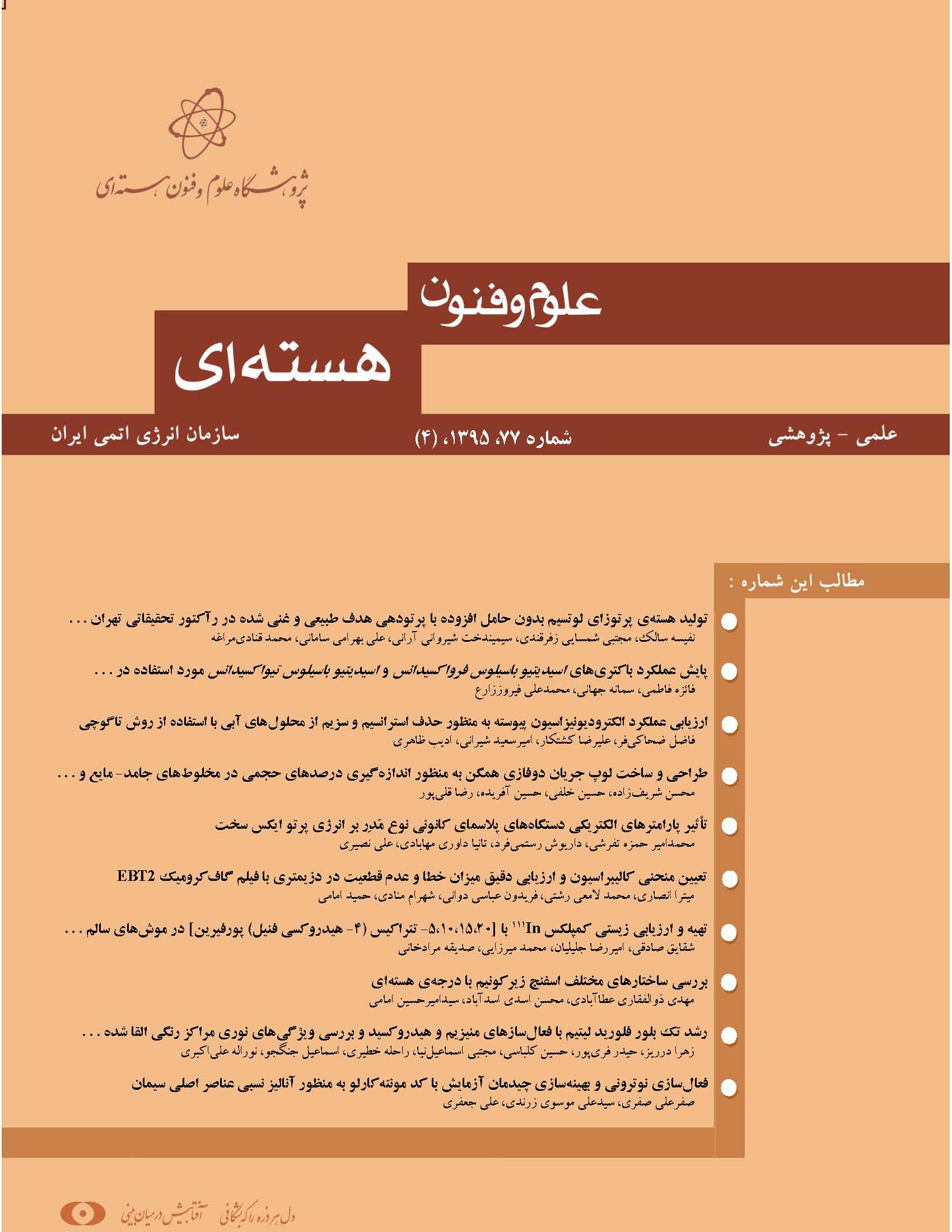[3] N.V. Filippov, T.I. Filippova, M.A. Karakin, V.I. Krauz, V.P. Tykshaev, V.P. Vinogradov, Y.P. Bakulin, V.V. Timofeev, V.F. Zinchenko, J.R. Brzosko, and J.S. Brzosko, Filippov type plasma focus as intense source of hard x-rays (Ex 50 keV), IEEE Trans. Plasma Sci. 24-4(1996( 1215-1222.
[4] N.V. Filippov, T.I. Filippova, V.P. Vinogradov, Dense, High-Temperature Plasma in a noncylindrical z-pinch compression, Nucl. Fusion Suppl. 2 (1962) 577.
[6] M.A. Abd Al-Halim, Simulation of Plasma Focus Devices with Hemisphere Electrodes, J. Fusion Energ. 29 (2010) 134-140.
[7] M.A. Tafreshi, M. Farrahi, M. Lamehi, Sh. Goudarzi, H. Habibi, M. Memarzadeh, V. Siahpoush, E. Saeedzadeh, V.P. Vinogradov, V.I. Krauz, V.A. Krivstov, M.A. Karakin, V.V. Myalton, V.P. Tykshaev,Dena a new PF device, Nukleonika 46 (1) )2001) S85-S87.
[10] D. Piriaei, T.D. Mahabadi, S. Javadi, M. Ghorannevis, S.H. Saw, S. Lee, The study of pinch regimes based on radiation-enhanced compression and anomalous resistivity phenomena and their effects on hard X-ray emission in a Mather type dense plasma focus device (SABALAN2), Phys. Plasmas 22 (2015) 123507.
[11] S.E. Sanaz, Namini, H.Z. khatir, M. Ghoranneviss, M.F. Aghamir, R.A. Behbahani, M. Kashani, Ion Beam Emission in a Low Energy Plasma Focus Device, J. Fusion Energ. 29 (2010) 471–475.
[12] B. Shirani and F. Abbasi, Construction and experimental study of a 2.5kJ, simply configured, Mather Type plasma focus device, Braz. J. Phy. 40-2 (2010)125-130.
[13] V. Damideh, A. Asle-Zaeem, A. Heidarnia, A. Sadighzadeh, M.A. Tafreshi, F. AbbasiDavani, M. Moradshahi, M. BakhshzadMahmoudi, and R. Damideh, Design and fabrication of 11.2 kJ Mather-type plasma focus IR-MPF-1 with high drive parameter. J. Fusion Energ. (2012) 31-1 47-51.
[14] V. Damideh, M.A. Tafreshi, A. Heidarnia, A. Asle-Zaeem, A. Sadighzadeh, Design and construction of the 5 kJ Filippov-type plasma focus with brass anode, J. Fusion Energ. 30-6 (2011) 462-465.
[15] L. Soto, New trends and future perspectives on plasma focus research, Plasma Phys Contr. F. 47 (2005) A361-A381.
[16] N.V. Filippov, T.I. Filippova, A.N. Filippov, M.A. Karakin, E.Yu. Khautiev, V.I. Krauz, V.V. Mialton. S.A. Nikulin, V.P. Tykshaev, and V.P. vinogradov. Experimental simulation of the collisionless shock wave by plasma focus, Czech. J. Phys. 50- S3 (2000) 127.
[17] R. Gratton, A.R. Piriz, On the use of plasma foci as drivers for pellet implosions, Nucl. Fusion 26-4, (1986) 483.
[18] B. Temple, O. Barnouin, and G.H. Miley, Plasma focus device for use in space propulsion, Fusion Sci. Technol. 19-3P2A (1991) 846-851.
[19] E.P. Bogolyubov, V.D. Bochkov. V.A. Veretennikov, L.T. Vekhoreva, V.A. Gribkov, A.V. Dubrovskii, Yu.P. Ivanov, A.I. Isakov. O.N. Krokin. P. Lee, V.Ya. Nikulin. A. Serban. P.V. Silin, X. Feng, and G.X. Zhang, A powerful soft X-ray source for X-ray lithography based on plasma focusing, PhysicaScripta 57 (1998) 488-494.
[20] L.I. Ivanov, V.N. Pimenov, S.A. Maslyaevet, Elena V. Dyomina, Vladimir A. Gribkov, Franco Mezzetti, Paola DeChiara, and Linda Pizzo, Influence of dense deuterium plasma pulses on materials in plasma focus device, Nukleonika 45(3) (2000) 203-207.
[21] Shaista Zeb, A. Qayyum, MehboobSadiq, M. Shafiq, A. Waheed, and M. Zakaullah, Deposition of diamond-like carbon films using graphite sputtering in neon dense plasma, Plasma Chem. Plasma P. 27-2 (2007) 127-139.
[22] V.I. Krauz, M.G. Levashova, M.A. Karakin, O.N. Krokhin, V.S. Lisitsa, A.N. Mokeev, V.V. Myalton, V.YaNikulin, A.V. Oginov. V.P. Smirnov, and V.E. Fortov, Influence of the radiation of the plasma focus-current sheath on the impolsion dynamics of condensed targets, Plasma Phys. Rep. 34-1 (2008) 43-51.
[23] S. Lee, Plasma focus radiative mode: Review of the Lee model code, J. Fusion Energ. 33 (2014) 319-335.
[24] V. Siahpoush, M.A. Tafreshi, S. Sobhanian, and S. Khorram, Adaptation of Sing Lee’s model to the Filippov type plasma focus geometry. Plasma Phys. Contr. F. 47 (2005) 1065-1075.
[25] M.A. Tafreshi, M.M. Nasseri, N. Nabipour, D. Rostamifard and A. Nasiri, Application of plasma focus device in fast industrial radiography, J. Fusion Energ. 33 (2014) 689-692.
[26] V. Raspa, L. Sigaut, R. Llovera, P. Cobelli, B. Knoblauch, R. Vieytes, A. Clausse, and C. Moreno, Plasma focus as a powerful hard X-ray source for ultrafast imaging of moving metallic objects, Braz J. Phys. 34- 4B (2004) 1696-1699.
[27] A. Kanani, B. Shirani, I. Jabbari, J. Mokhtari, Assessment of image quality in X-ray radiography imaging using a small plasma focus device, Radiat. Phys. Chem. 101 (2014) 59-65.
[28] Sing Lee and Adrian Serban, Dimensions and lifetime of the plasma focus pinch, IEEE Trans. Plasma Sci. 24-3 (1996) 1101-1105.

